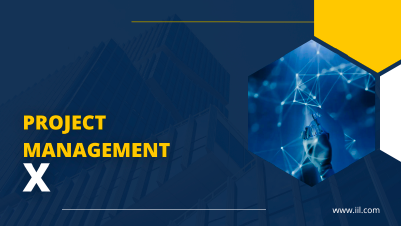Applying the PMBOK® Guide –
Seventh Edition to Projects
In the fast-paced world of project management, it’s important to be adaptable, nimble, agile, and hybrid.
The PMBOK® Guide – Seventh Edition is a valuable resource for project professionals. Released in August 2021, the PMBOK® Guide – Seventh Edition reflects the full value delivery spectrum from predictive (waterfall) to adaptive (such as Agile). It contains the Standard for Project Management, project management principles, project domains and information on how to tailor practices and artifacts to help you effectively manage projects.
Manage projects with clarity and confidence.
Get to know the PMBOK® Guide – Seventh Edition. Take a deep dive with our Free Resources below.
Articles from
The IIL Blog
Gain in-depth knowledge about the PMBOK® Guide – Seventh Edition directly from project management subject matter experts.
By Cynthia Snyder Dionisio | July 12, 2023
Even though the PMBOK® Guide – Seventh Edition was released two years ago, there are still many project managers who are wondering how it is structured, and how they can use it.
By Cynthia Snyder Dionisio | July 26, 2023
How do organizations see the PMBOK Guide – 7th Edition on a project, and how can it be used to improve outcomes? Here are some ideas to consider.
Free On-Demand Webinars
Unpacking the PMBOK® Guide – Seventh Edition
With Max Langosco
Join us to learn what drove the new structure, and how the PMBOK® Guide addresses all forms of value delivery from predictive (waterfall) to adaptive approaches. You will get an overview of each section and understand how you can apply the information in your job.
With Max Langosco
Change is related to observing value with an evolving context, and being able to remain relevant by adapting to it. This includes being responsive to stakeholders’ evolving needs, or to evolving regulations, or to an evolving business context. It can, therefore, originate from both internal and/or external sources.
Systems thinking relates to taking a holistic view of a project – understanding a project’s interdependent internal components interacting also with external systems. Taking a systems approach to project management means becoming responsive to systemic changes in order to steer the whole towards value delivery, since change constantly requires attention and dynamic responses.
Tailoring relates to the setup of the project development approach. This is to be defined considering the unique aspects of each project and of each project environment. Tailoring relates to selecting the most appropriate method to deliver the desired outcome, taking into consideration the unique aspects of each project context. Tailoring happens throughout the project, taking into consideration the evolving realities around the project.
With Max Langosco
Quality relates to the activities set in place to deliver the level of value expected by both the customer and the business. It entails the creation of the ability to satisfy the customer’s stated or implied needs. Quality is evaluated against the acceptance criteria, the definition of “done”, or fitness for use.
With Max Langosco
Stakeholders either influence, or are influenced by the project processes, the project performance, the project outcomes and deliverables. How stakeholders engage with the project will be a key factor in determining the project’s likelihood of success and delivering value.
With Ed Lively
Risk relates to uncertain events, whether planned, expected, or not, which may meaningfully impact the project, either negatively or positively. The completion of this webinar will enable you to have a clear understanding of the content of this principle.
With Mario Landa
Value relates to continually evaluating and adjusting project alignment to business objectives and to the intended benefits. Understanding value makes delivering project success possible, either at the end of the project or throughout the project life cycle.
Value is rarely only quantitative. In fact, qualitative elements are often key to the proper clarification and understanding of value.
IIL's Featured Project Management Courses

Questions?
Contact us today for a free consultation.
We look forward to supporting your professional development goals.





